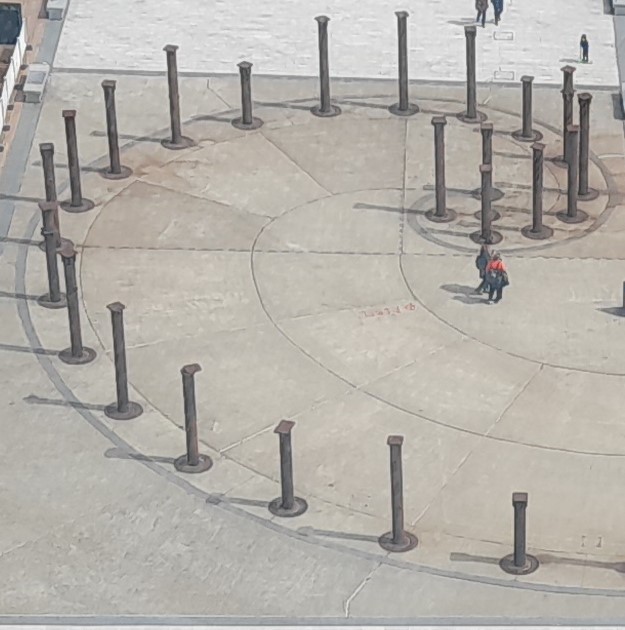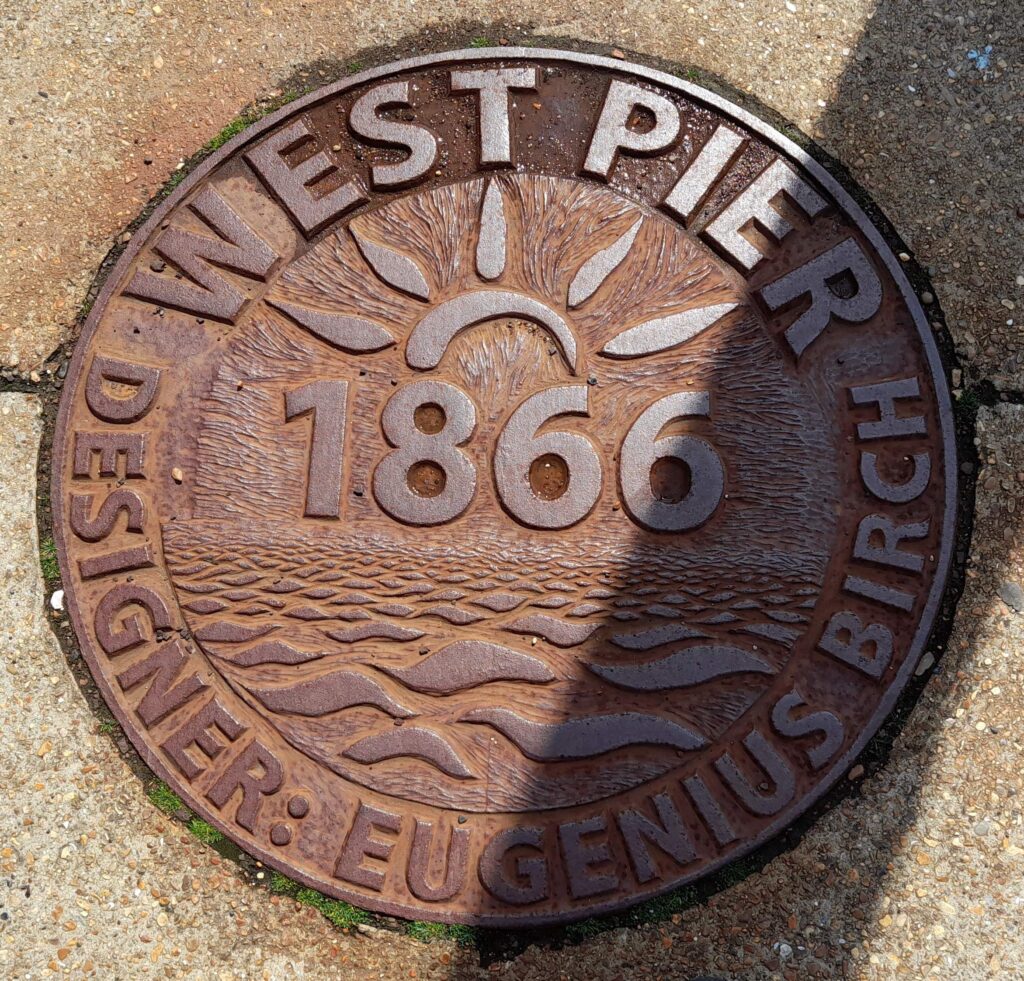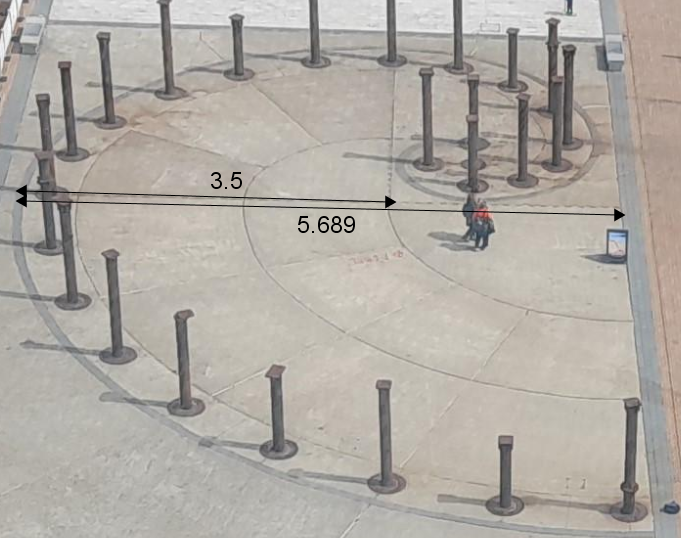A few weeks ago I visited Brighton seafront. While there, I spotted several lovely mathematical sights, including this spiral.

I first saw the spiral (and took the photo) from the i360 (which I’ll write about another time), and when I got down I went to investigate. It was intriguing! The entire seafront has clearly been redeveloped fairly recently and the paving is new and modern, but the pillars making up the spiral are old – covered in corrosion that must have taken place over decades. Try as I might, I couldn’t see any pattern to the heights of the pillars, which are all different. Why are they there? Why a spiral? There’s tantalisingly little information about them at the site; the only clue I found was a plaque bearing the words ‘West Pier 1866 Designer: Eugenius Birch’.

A little googling when I got home found the answers. The pillars come from the remains of Brighton’s West Pier, which opened in 1866 and was burned down in 2003. That explains the extensive corrosion – the pillars spent nearly 150 years standing in the sea. The pier was designed by Eugenius Birch, and a geometric spiral was chosen both as a tribute to the mathematics and engineering in Birch’s architecture and to reflect the curves of the waves on the beach.
But what type of spiral is it? The article I found claims that it’s a golden spiral – one made up of quarter circles whose radii increase by a factor of the golden ratio ($\phi = 1.618…$) as the spiral progresses. That certainly looks feasible, but I wanted to verify it for myself. Sadly I didn’t think to measure any of the distances while I was there, and as the photo I took isn’t from directly above the spiral it’s hard to get any firm conclusion. But there are two radii in the picture that are the same distance from the camera – I can at least find out if the ratio between them is $\phi$.

Using my trusty GeoGebra, the radius of the biggest quarter circle is 5.689, and the radius of the second biggest is 3.5. The ratio between them is 5.689 $\div$ 3.5 = 1.625… That’s close enough to $\phi$ for me!

Leave a Reply